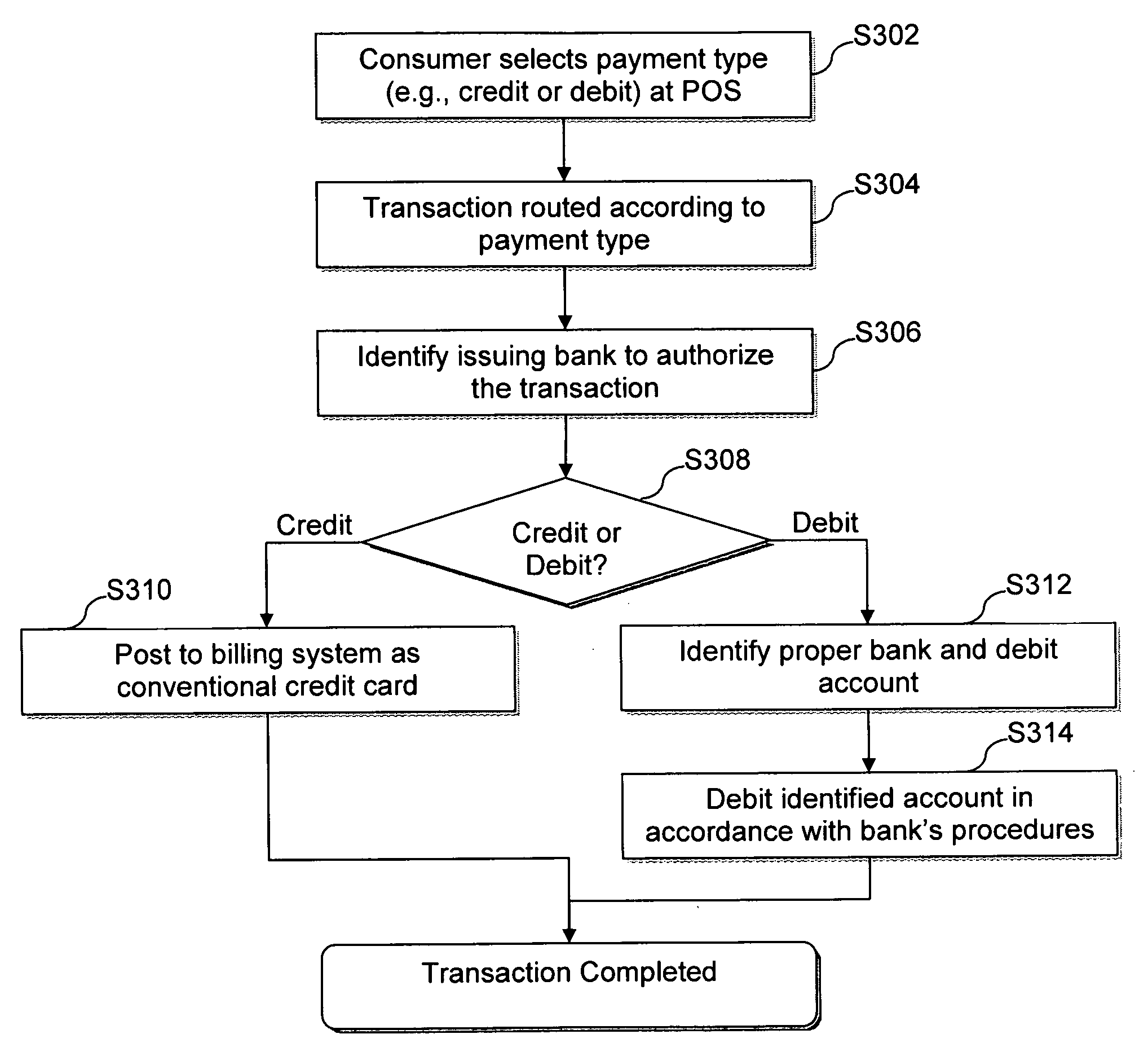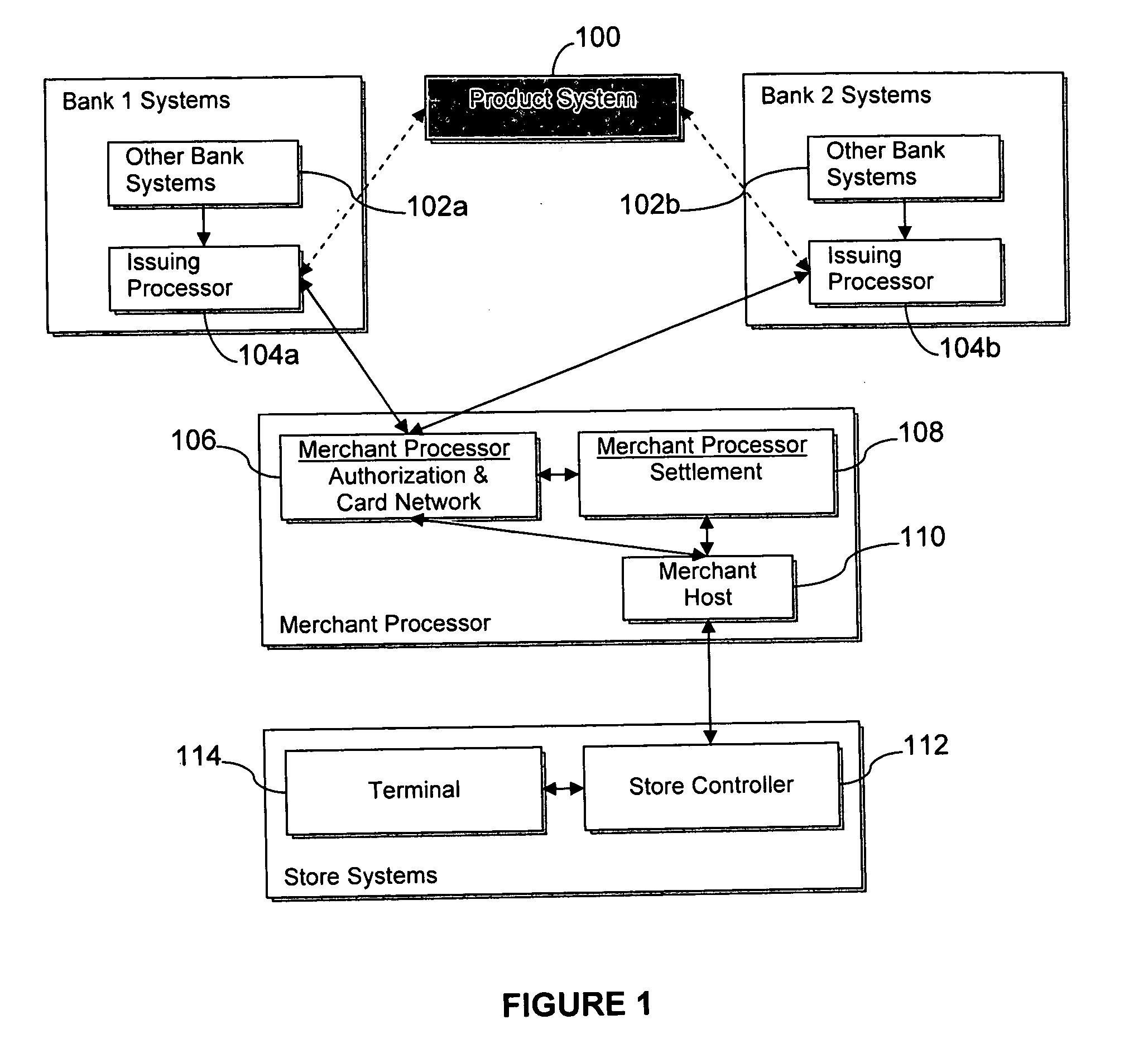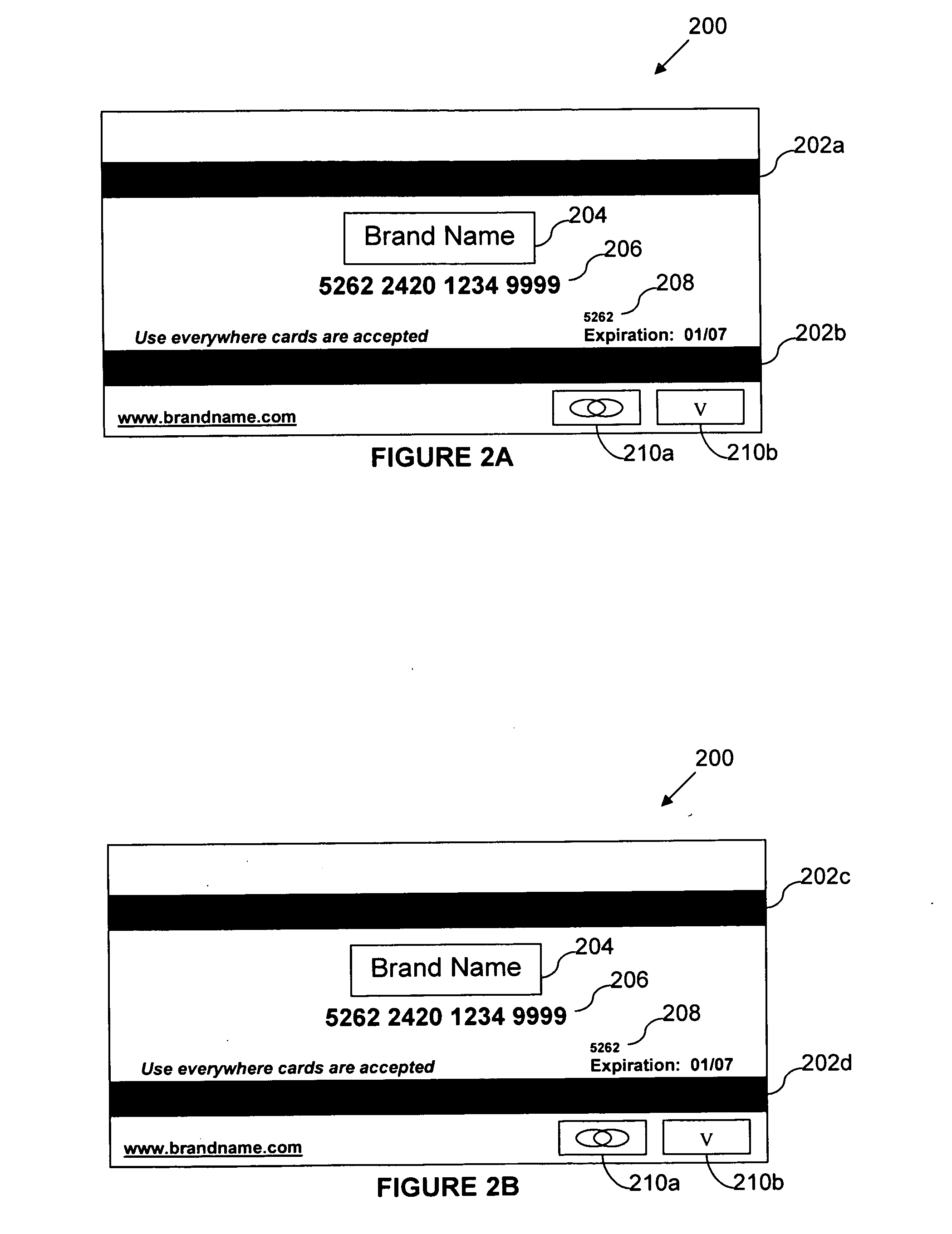Systems and/or methods for simplifying payment systems, and payment instruments implementing the same
a payment system and system technology, applied in the field of systems and/or methods for simplifying payment systems, can solve the problems of reducing the number of credit and/or debit cards used by consumers, affecting the use of credit and/or debit cards, and consumers facing a time-consuming process of cancelling and replacing each and every card, so as to reduce confusion associated with card orientation at the point of sale, enhance card readability, and quick and easy identification
- Summary
- Abstract
- Description
- Claims
- Application Information
AI Technical Summary
Benefits of technology
Problems solved by technology
Method used
Image
Examples
Embodiment Construction
[0034]The exemplary embodiments described herein relate to systems and / or methods for simplifying payment systems, and payment instruments implementing the same. As will be appreciated, the techniques described herein may be used in alone and / or in various combinations.
I. Inserting a Product System into a Standard Financial Transaction without Disrupting the Existing Merchant Transaction Flow
[0035]Certain exemplary embodiments relate to techniques for inserting a product system into a standard financial transaction without disrupting the existing merchant transaction flow. The brand may develop innovative products by controlling the specifications to the system, while the brand and its payment product(s) work with one or more banks and / or one or more merchant and / or banking networks (e.g., Visa, AmEx, ACH, Plus, Pulse, etc.).
[0036]Currently, the product specification is controlled by the network and each bank controls its own system. However, according to certain exemplary embodimen...
PUM
 Login to View More
Login to View More Abstract
Description
Claims
Application Information
 Login to View More
Login to View More - R&D
- Intellectual Property
- Life Sciences
- Materials
- Tech Scout
- Unparalleled Data Quality
- Higher Quality Content
- 60% Fewer Hallucinations
Browse by: Latest US Patents, China's latest patents, Technical Efficacy Thesaurus, Application Domain, Technology Topic, Popular Technical Reports.
© 2025 PatSnap. All rights reserved.Legal|Privacy policy|Modern Slavery Act Transparency Statement|Sitemap|About US| Contact US: help@patsnap.com



